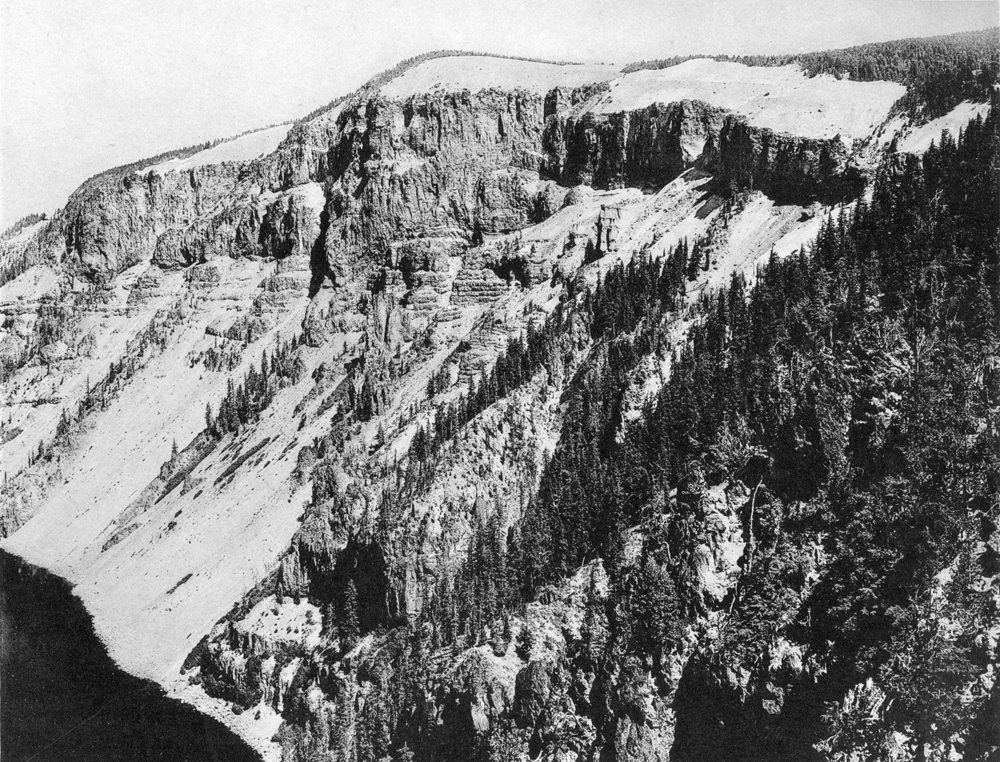The Geology of Crater Lake National Park, Oregon With a reconnaissance of the Cascade Range southward to Mount Shasta by Howell Williams
Inter-andesitic Dacite Pumice on the Caldera Walls
IN THIS section, our concern is with the deposits of dacite pumice erupted during the closing stages of the andesitic period in Mount Mazama’s history and before the extrusion of the dacite flows from the Northern Arc of Vents; in other words, before the flows of Llao Rock, Cleetwood, Redcloud Cliff, and Cloudcap.
On the south wall of the caldera, the dacite pumice in question is restricted to a single small lens, approximately a third of the distance down the wall, 1/4 mile north of Discovery Point. On account of its pink color, it is plainly recognizable even from a distance, and can be traced laterally for several hundred yards. The maximum thickness is close to 30 feet. Locally the pumice rests on andesitic lava, but generally it is underlain by coarse, bouldery till. Above it lie two thick flows of andesite separated by glacial debris. Capping the highest flow are two other layers of dacite pumice separated by till; these, however, belong to the post-andesitic activity of Mount Mazama.
Between Discovery Point and Redcloud Cliff, inter-andesitic pumice seems to be absent. The thin lenses under the moraines in Sun and Kerr notches belong to a later time, and the topmost pumice on the caldera rim is a product of the culminating explosions of the volcano. Below the dacite flows of Redcloud and Cloudcap, however, dacite pumice and welded tuff are exposed to a thickness of approximately 200 feet (plate 10). Their pale cream, buff, and pink colors contrast strikingly with the dark lavas above and below. The eye is also attracted by them on account of the fantastic forms into which they have been eroded, especially at the Cottage Rock.
|
Plate 10. Redcloud Cliff, showing the great dacite flow overlain by: 1, pumice: 2, glacial till; 3, pumice; and underlain by an older dacite flow (upper right). Beneath the latter lie thick deposits of pumice and welded tuff, and then a succession of andesite flows. Three distinct glacial layers can be seen within 100 feet of the lake. Two thin layers of lava separate them. Two other glacial layers occur on these walls, but do not show well in the photograph. See, for comparison, panorama, plate 23. (Photograph by George Grant, National Park Service.) |


